These are challenging times for greenhouse growers. The uncertainty surrounding energy, and the constantly rising prices, are driving growers everywhere to explore new ways to reduce their energy consumption. According to Ziv Shaked of Drygair, many growers already know that the most “low-hanging fruit”, regarding energy reduction, is dehumidification. "Introducing a dehumidifier is one of the quickest and cheapest ways to reduce greenhouse energy consumption right away, but choosing the right greenhouse dehumidifier is no easy task. Dehumidifiers vary in their technology, operational requirements, capacity, extraction rates, and efficiency."
According to Ziv, every dehumidifier manufacturer uses different metrics when presenting their products. "This can create a lot of confusion, making the choice much more difficult than it should be."
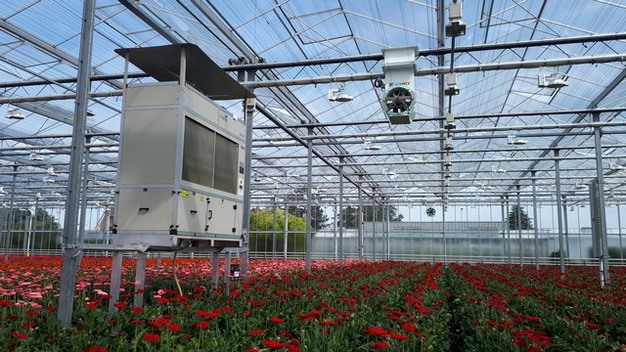
To make things clearer, the company has put together the top factors growers should consider when choosing the right dehumidification system for their greenhouse:
Dehumidification Technology
The first thing that’s important to note when selecting a dehumidifier, is the type of technology. "There are two main technologies when it comes to greenhouse dehumidification – condensation-based dehumidifiers, and desiccant-based dehumidifiers," Ziv says.
Condensation-based dehumidifiers, such as DryGair's, are the most common solution to greenhouse humidity control. "They don’t require any other materials to operate," Ziv points out. "So, in essence, condensation-based dehumidifiers only need an energy input to control humidity."
Desiccant-based dehumidifiers work differently. Rather than using cooling to condense and extract water, they use a desiccant material to soak up moisture. "However, once the desiccant material runs out, it must be replaced to maintain efficacy," Ziv says. "Of course, desiccant-based dehumidifiers also require an energy input."
Energy Efficiency
The two types of dehumidifiers operate differently, yet Ziv remarks that technology isn't the most important factor, but rather how efficiently it's used. "Energy efficiency is by far the most important metric you should use when comparing dehumidifiers. Especially during times like these, when energy prices are rising."
To calculate the energy efficiency of a dehumidifier, simply divide the amount of water it extracts, by the amount of energy it uses. For example, DryGair’s DG-12 unit extracts 45 liters per hour, using 10 kW of electricity. That makes the efficiency – 4.5 liters per kWh.
To get the most accurate measurement, growers should always consider all energy sources. "So for example, if you use gas rather than electricity, or if your dehumidifier is connected to a heating system, you should include these sources in your efficiency calculation."
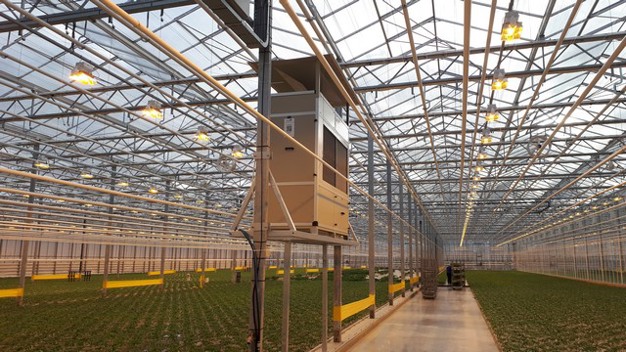
Design Conditions
Ziv points out again how critical is to determine the energy efficiency of a dehumidifier. "But to compare different solutions, there need to be similar conditions," he adds. "Some dehumidifiers marketed to greenhouse growers aren’t actually designed for horticultural use, but rather for other industrial needs. So, despite presenting high extraction rates, they don’t actually operate in the same efficiency in real-world greenhouse conditions."
Let’s use an example. A dehumidifier presents extraction rates of 45 liters per hour, at 26°C, and 100% relative humidity. That may sound like a lot of water. But these are far from the conditions found in a successful commercial greenhouse.
Most greenhouses maintain much cooler temperatures, around 18°C, and strive to keep humidity low, around 75-80%. Under these conditions, the dehumidifier in our example won’t be able to remove nearly as much as 45 liters per hour.
On the other hand, a dehumidifier that boasts the same extraction rate, but at design conditions of 18°C and 80%, will be able to successfully extract the presented amount of water in a real greenhouse.
"Furthermore, if it’s warmer, or more humid, extraction rates will only go up, as there is more moisture in the air. So, dehumidifiers designed for lower temperatures and lower humidity are much more efficient," Ziv adds.
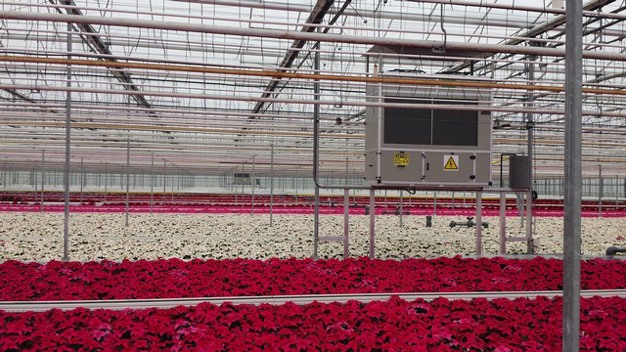
Condensation
Another aspect to consider is condensation. "When water begins to appear, molds and mildews like botrytis start to develop. So it’s very important to avoid dew point condensation all the time."
Condensation usually occurs when temperatures drop. So the last thing you want is a dehumidifier that can’t cope with lower temperatures. Ziv: "Using a dehumidifier that retains efficiency in cooler temperatures is critical in avoiding the dew point and preventing diseases."
Airflow capacity
Airflow capacity refers to the amount of air a dehumidifier can treat in a certain time period. Some manufacturers present this in m3/hour, while others use CFM (cubic feet per minute). Regardless of the metric used, Ziv says it’s important to understand what capacity means.
"For example, a greenhouse is 20 meters long, 10 meters wide, and 4 meters high, meaning 800 m3 total. If a dehumidifier’s airflow capacity is 4,000 m3/hour, it would be able to treat the entire volume of air 5 times per hour, meaning 12 minutes to treat the entire greenhouse. If your greenhouse is too big for your dehumidifier’s capacity, you may end up with high humidity and mold outbreaks."
The high capacity also means faster dehumidification. "So if humidity suddenly spikes, a dehumidifier with a higher capacity will be able to react quicker, and stop it from going up further."
Some growers use multiple dehumidifiers to reach the same capacity as one more powerful dehumidifier. But according to Ziv, it’s key to consider that every dehumidifier requires its own space, energy, and upkeep. "So one larger dehumidifier is almost always better than several smaller ones."
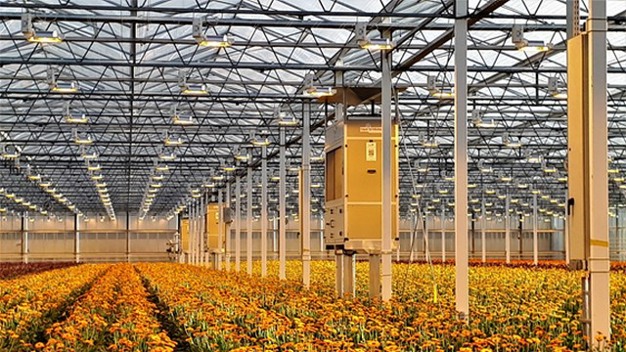
Air circulation vs directional airflow
One of the reasons growers use multiple dehumidifiers, rather than one, is to “cover more space”. "But this has less to do with capacity, and more to do with the way some dehumidifiers disperse the treated air," Ziv says. "Most dehumidifiers expel the dry air in one direction. This creates a “humidity gradient”, in which the air closest to the dehumidifier is very dry, but the air further away is more humid. It also means the dehumidifier keeps treating the same air over and over again, never reaching the far corners of the greenhouse. This isn’t just very inefficient, but it may also fail to prevent diseases."
Some dehumidifier manufacturers take this into consideration. DryGair, for example, incorporates a patented air circulation mechanism, which pushes air in all directions, 360°. "This creates uniform conditions everywhere in the greenhouse, both near the dehumidifier, and far away."
Every greenhouse has unique dehumidification requirements
Not only do dehumidifiers differ from one to another, but also dehumidification needs greatly vary from one greenhouse to another, and there are many factors that affect specific requirements.
Some of the factors determining your dehumidification requirements include the size of the greenhouse, the type of crop, the number of plants and placement density, the geography and climate, the lighting, the heating and cooling systems and the thermal, shade or blackout screens. "These are just some of the factors that affect humidity, but there are more. In short – determining your greenhouse’s dehumidification needs is complex," Ziv summarizes.
"An often-overlooked factor, when comparing dehumidifiers, is the manufacturers horticultural knowledge and expertise. Buying a dehumidifier without properly determining your needs, may cost you a lot, without even solving your humidity problem. It’s always better to go with a dehumidifier manufacturer that can help you understand your needs, tailor a solution that can reliably solve your humidity problem, and provide the knowledge needed to operate as effectively and efficiently as possible."
For more information:
DryGair 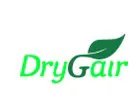
www.drygair.com
[email protected]
